”Hi, my name is Francis. I am your travel guide to the roots of the London Underground and to the origins of the names of all stations currently in use. This is the fifth stage of our wonderful journey. Welcome aboard! Here are the stations from Naesden to Russell Square.”
NAESDEN
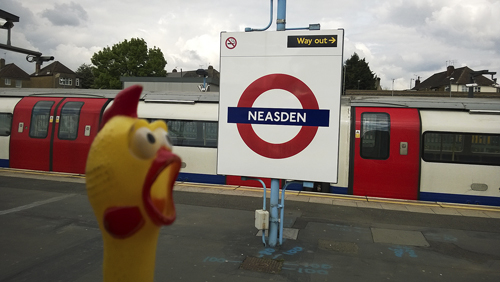
Neaeden was recorded as Naesdun in 939 and the name is derived from the Old English naess, ’nose’ and dun, ’hill’ – it means ’the nose-shaped hill’ referring to well defined landmark of this area. It was known as Needsden in 1750, and the present spelling appeared at a later date.
The station was opened as Kingsbury & Neasden on 2 August 1880; re-named Neasden & Kingsbury on 1 January 1910 and Neasden on 1 January 1932.
NEWBURY PARK
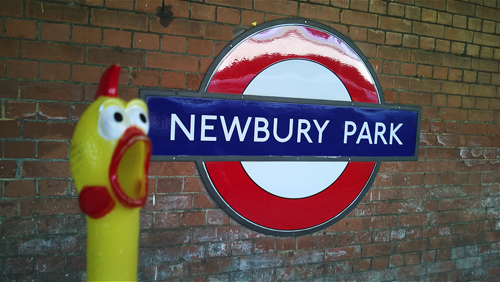
Newbury Park was recorded in 1348 and is derived from new and the Old English burh, ’manor house’. It therefore means ’the (then) new manor’, in the park.
The station was opened as Newbury Park by the Great Eastern Railway on 1 May 1903 and was first used by Underground trains on 14 December 1947.
NORTH ACTON
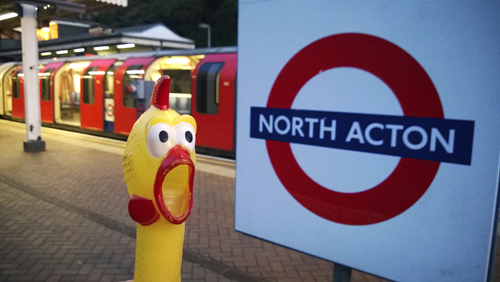
See Acton Town.
The station was opened as North Acton on 5 November 1923. (There had been a Great Western Railway halt named North Acton, to the west of the present station, from 2 May 1904 to 31 January 1913.)
NORTH EALING
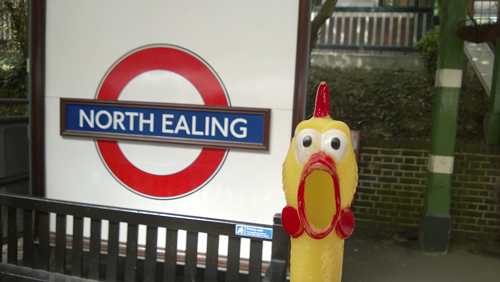
See Ealing Broadway.
The station was opened as North Ealing on 23 June 1903.
NORTHFIELDS
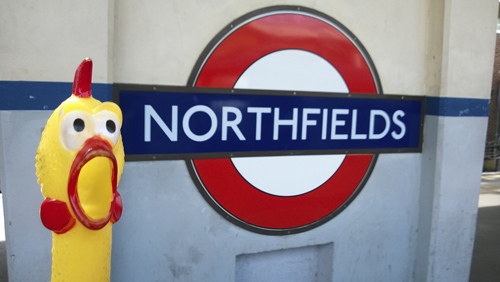
Northfields is a new district name preserving the old field-name Northfield which is self-explanatory, being recorded in 1455.
The station was opened as Northfield Halt on 16 April 1908; re-named Northfields & Little Ealing 11 December 1911; re-sited as Northfields, east of the old site, on 19 May 1932.
NORTH HARROW
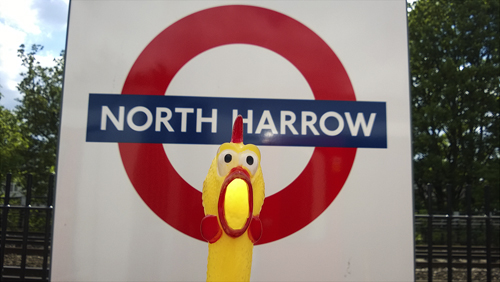
See Harrow-on-the-Hill.
The station was opened as North Harrow on 22 March 1932.
NORTH GREENWICH
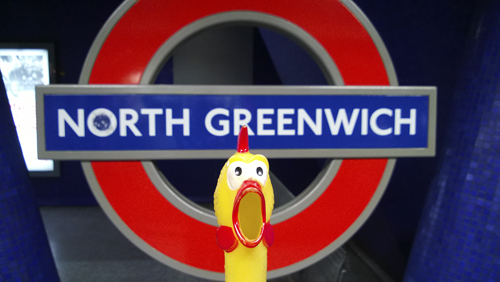
Greenwich it seems was given its name by either the Saxon invaders of the sixth century who called it Green Village – from the Old English green and wic. Or maybe the invading Danes of the ninth century who called it the ’Green Reach’, the reach referring to the straight part of the River Thames on which Greenwich stands. It was recorded as Grenewc in 964 and Grenvtz in the Domesday Book (1086). The place of course is famous for being on ’0 degrees’ of longitude and therefore ’Standard Time’ for most countries of the World is based on ’Greenwich Time’.
The station was opened as North Greenwich on 14 May 1999.
NORTHOLT
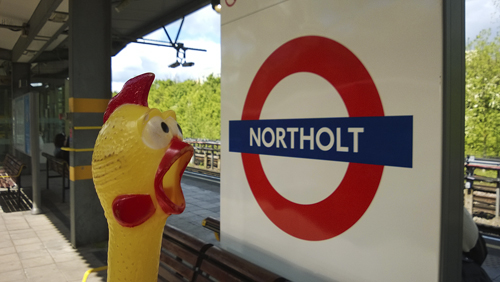
Northolt was recorded as nord healum in 960 and as Northala in the Domesday Book and the name is derived from the Old English nord, ’north’ and health, ’heath’ – it means ’the north heath’ or ’angle of land’ in contrast to Southall. Known as Northolt by 1610.
The station was opened for Underground trains as Northolt on 21 November 1948, replacing a halt of the same name, but on a different site, which had been opened by the Great Western Railway on 1 May 1907.
NORTH WEMBLEY
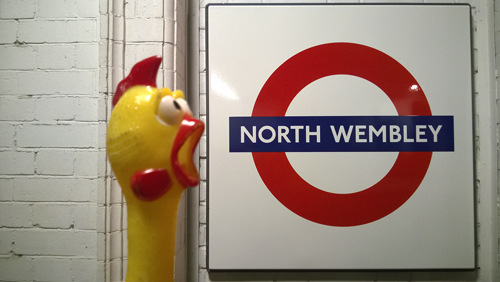
See Wembley Central.
The station was opened as Wembley Central by the London & North Western Railway on 15 June 1912, and was first used by Underground trains on 16 April 1917.
NORTHWICK PARK
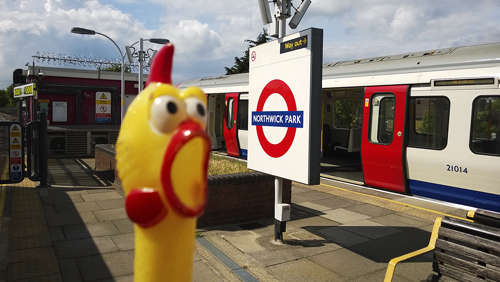
Northwick Park is a modern name and comes from the Northwick family, Lords of the Manor of Harrow in 1797.
The station opened as Northwick Park & Kenton on 28 June 1923; re-named Northwick Park on 15 March 1937.
NORTHWOOD
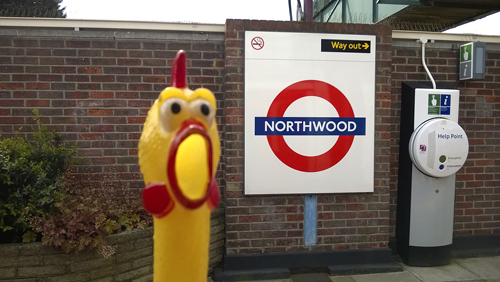
Northwood was recorded as Northwode in 1435 and was originally the name of a Wood and farm lying to the north of Ruislip. The present town dates chiefly from the construction of the railway c. 1885.
The station was opened as Northwood on 1 September 1887.
NORTHWOOD HILLS
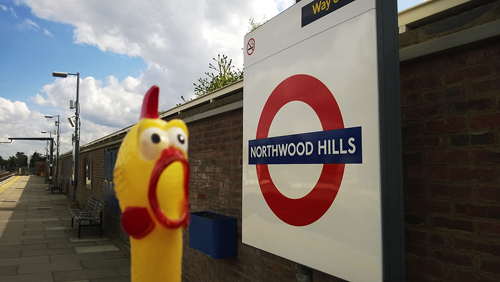
See Northwood. The Hills refer to nearby high ground. The station may have its name as a result of a public competition sponsored by the Metropolitan Railway.
The station opened as Northwood Hills on 13 November 1933.
NOTTING HILL GATE
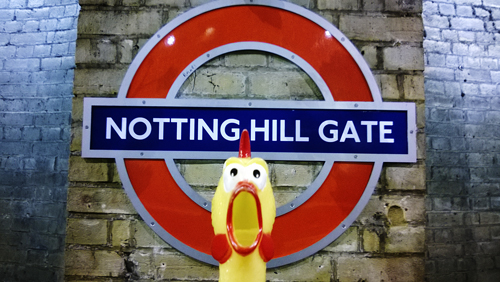
Notting Hill Gate was recorded as Knottynghull in 1356 but the origin of the name is in some doubt. It may be taken from the Old English cnotting, ’a hill’ or more probably it is the name (or nickname) for a family who settled in this area in early times, called Knottying. Recorded as Noding Hill in 1680 and with the present spelling at a later day. A gate formerly stood at the junction of Kensington Church Street and the main road and was removed in 1864.
The station was opened as Notting Hill Gate on 1 October 1868.
OAKWOOD
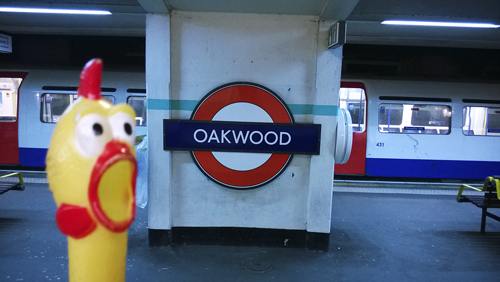
Oakwood takes its name from the nearby Oakwood Park, or possibly a large house which once stood here called Oak Lodge.
The names of East Barnet and Merryhills were considered but the station was opened as Enfield West on 13 March 1933; re-named Enfield West (Oakwood) on 3 May 1934, and Oakwood on 1 September 1946.
OLD STREET
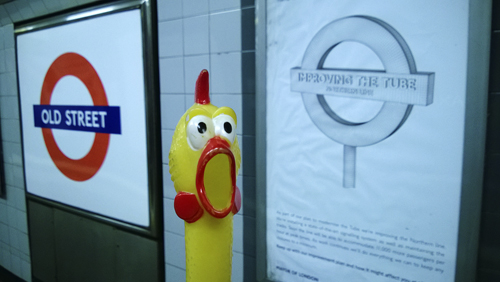
Old Street was recorded as Ealdestrate c. 1200 and le Oldestrete in 1373. Originally from Roman Road, then the old highway from the Aldersgate to the north-east of England, before Bishopsgate was built.
The station was opened as Old Street on 17 November 1901.
OLYMPIA
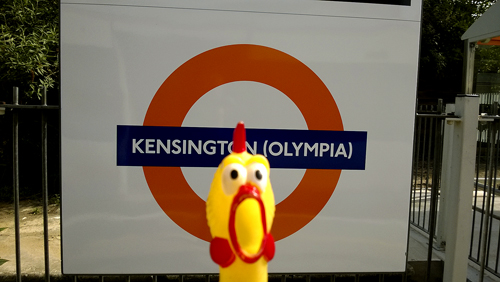
See Kensington (Olympia).
OSTERLEY
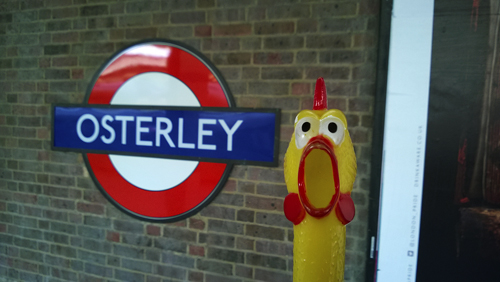
Osterley was recorded as Osterle in 1274 and the name is derived from either the Old English word eowestre, which can be interpreted as meaning ’sheepfold clearing’, being once pasture land, or the Old English ost, ’a knob of land’ and leah, ’a glide’, which can be interpreted as meaning ’a hillock’. Recorded as Austerley in 1609 and Osterley at a later day.
The station was opened as Osterley & Spring Grove on 1 May 1883. It was re-sited further west and the new station opened on 25 March 1934 as Osterley. The earlier station can still be seen.
OVAL
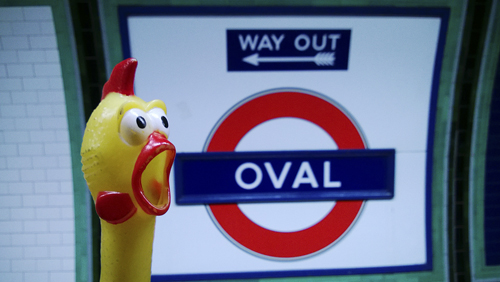
Oval is the famous ground of the Surrey County Cricket Club which was formed in 1884, the name Oval coming from the shape of the ground. The first piece of turf was laid in March 1845. The first cricket match was played on or about 13 May of that year, and the first Test match in England (v. Australia) in 1880.
Prior the station’s opening the name of Kennington Oval was considered, and may have been used for a short time after opening. Officially, the station was opened as Oval on 18 December 1890.
OXFORD CIRCUS
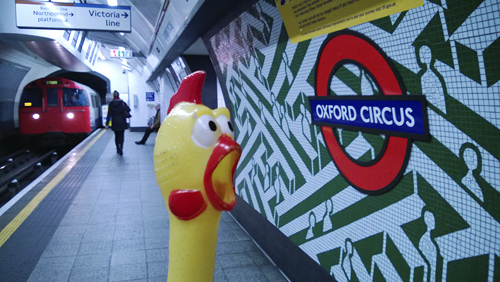
Oxford Circus takes its name from Oxford Street of which it forms a part. This was the old road to Oxford in 1682, recorded as Oxford Road in 1720, and Oxford Street in 1725. The Circus was originally named Regent Circus until the late 19th century.
The station was opened as Oxford Circus on 30 July 1900.
PADDINGTON
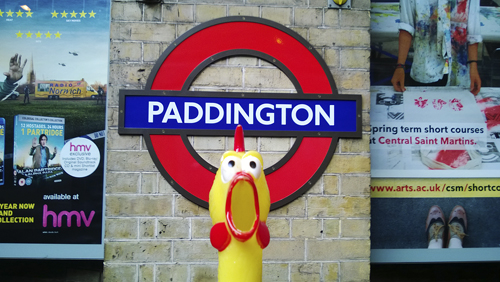
Paddington was recorded as Padintune in 959 and the name is derived from the personal name of Saxon Padda and the Old English tun, ’a farm’ – it means ’the farm of Padda’, an Anglo Saxon chieftain. Recorded as Patyngton in 1398 and changed to Paddington in the course of time.
The Circle Line station (Opposite the Great Western Station Hotel) was opened as Paddington (Praed Street) on 1 October 1868; re-named Paddington 11 July 1948. The Hammersmith & City Line station (alongside the main line platform 12) was opened as Paddington (Bishop’s Road) on 10 January 1863; re-named Paddington on 10 September 1933. The Bakerloo Line station was opened as Paddington on 1 December 1913.
PARK ROYAL
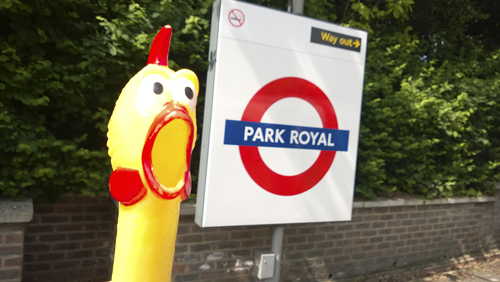
Park Royal was the grand name given to a piece of land where an unsuccessful attempt was made to establish a fixed ground for the Royal Agricultural Society Annual Show. Before the First World War the land was build over and the name became that of a district.
The station was opened as Park Royal & Twyford Abbey on 23 June 1903; re-sited on 6 July 1931 and re-named Park Royal.
PARSONS GREEN
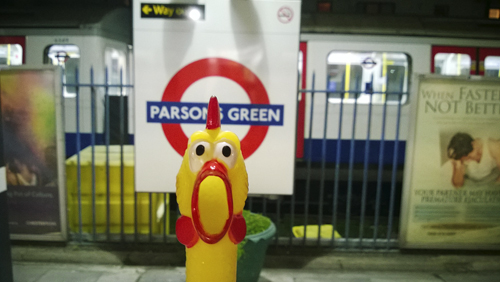
As the name suggests, this was the hamlet which grew up round the parsonage house of Fulham, being recorded as Personesgrene in 1391. The Green is now a small triangular place of land on the edge of which stands the parish church.
The station was opened as Parsons Green on 1 March 1880.
PERIVALE
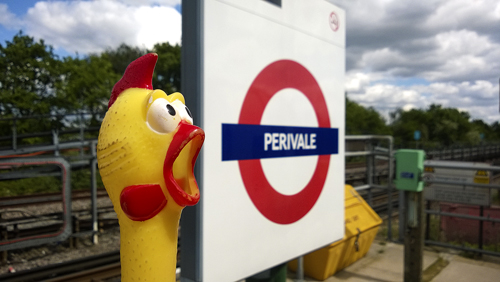
This district was originally known as Greneford and is recorded as this in the Domesday Book, later to be known as Little Greenford (in 1386) a distinction from Greenford (or Great Greenford). The name was changed by 1508 to Pyryvale and is derived from Middle English perie, ’ a pear tree’ and Old French val, ’vale’ and means ’the valley with the pear trees’, which referred to a nearby meadow. Called Purevale in the late 16th century, it changed to the present spelling in the course of time.
The station was opened for Underground trains as Perivale on 30 June 1947. It replaced a Perivale Halt on the Great Western Railway opened on 2 May 1904.
PICCADILLY CIRCUS
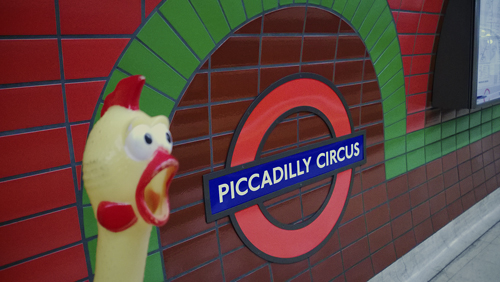
The name Piccadilly is probably derived from Pickadilly Hall, the popular name of a house built in c. 1611 near Windmill Street by a retired tailor, Robert Baker, who made much of his fortune by the sale of ’pickadillies’, a form of collar or ruff. The street was known as Portugal Street in 1692 in honour of Catharine of Braganza, the Queen of Charles II, but changed to Pickadilly Street by 1763. The Circus, built during the 19th century, covers the site of a house and garden belonging to a Lady Hutton; the garden was near a field known as the Round Ringill.
The station was opened as Piccadilly Circus on 10 March 1906. An extensively reconstructed station was opened on 10 December 1928.
PIMLICO
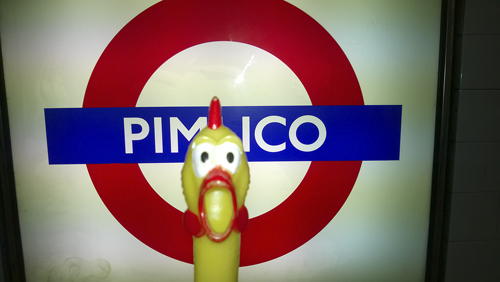
Pimlico is a comparatively new district of London, recorded as Pimplico in 1630. It seems that the name was copied from a garden of public entertainment in Hoxton (north London), named after its owner, a well known inn-keeper, Ben Pimlico, whose name was also given to his inn (late 16th century). There was once a Pimlico Walk in Hoxton. Pimlico, on the north bank of the Thames, was almost uninhabited before the 19th century.
The station was opened as Pimlico on 14 September 1972.
PINNER
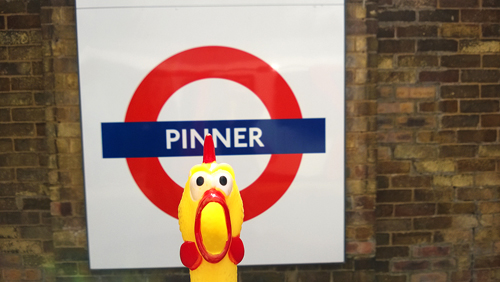
Pinner was recorded as Pinnora in 1232 and the name is derived from a personal name (or nickname) Pin (or Pinna), and the Old English ora, ’bank edge’ or ’slope’ – this refers to the original village street which slopes steeply up to the church from the Pinn River – and thus means ’the slope to Pinna’s place’. It is certain that the River Pinn take its name from the old village and not vice versa. It was recorded as Pynnor in 1483.
The station was opened as Pinner on 25 May 1885.
PLAISTOW
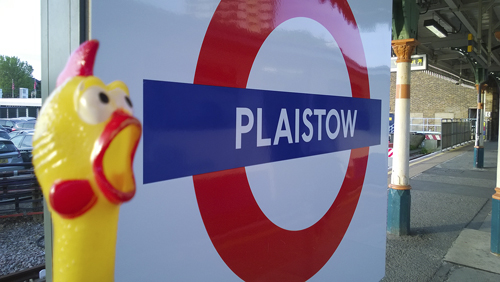
Plaistow was recorded as Plagestoue c. 1200 and was the ancient site of a Manor and a place of court meetings. It was also, on occasions, the place where ’miracle plays’ and similar entertainments were performed. The name is derived from the Old English pleg, ’sports’ or ’playing’ and stowe, ’place’ – and means, simply, ’the playing-place’.
The station was opened as Plaistow by the London, Tilbury & Southend Railway on 31 March 1858; first used by Underground trains on 2 June 1902.
PRESTON ROAD
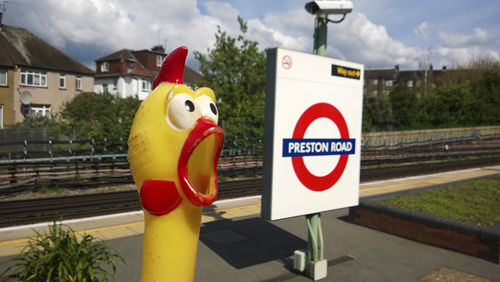
Preston Road was mentioned as Preston in 1994 and the name comes from the Old English preast, ’a priest’ and tun ’a farm’ – and means ’the farm belonging to priest(s)’. A priest is mentioned in the Domesday Book as holding land in the parish of Harrow, possibly at this location. The road was added to the name as the district grew in the course of time.
The station was opened as Preston Road halt on 21 May 1908; new station (re-sited) 22 November 1931.
PUTNEY BRIDGE
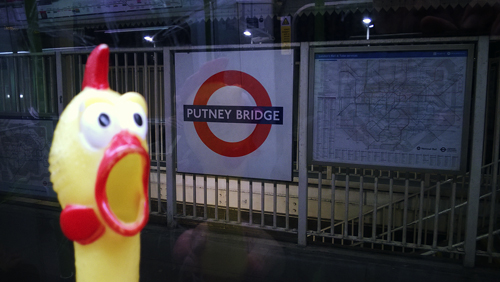
Putney Bridge was recorded as Putelei in the Domesday Book and the name is derived from the Saxon personal name Puttan and the Old English hyp, ’a landing place’ – Puttans’s wharf. This was one of many such landing places on River Thames. The original wooden bridge was erected in 1729 and replaced by the present stone bridge in 1884–86. It was widened in 1933.
The station opened on 1 March 1880 as Putney Bridge & Fulham; re-named Putney Bridge & Hurlingham 1 September 1902; Putney Bridge 1932.
QUEENSBURY
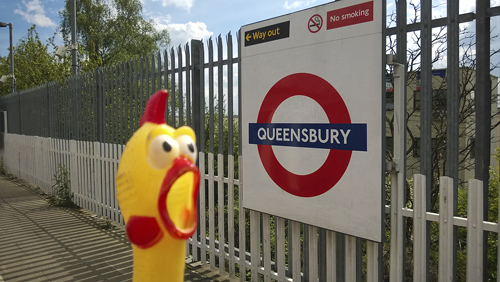
Queensbury really means ’a fortified place’ but do not look for the remains in this part of north-west London. When the new Metropolitan Line to Stanmore was opened on 10 December 1932, one station was called Kingsbury. Two years later, a further station was opened and the name Queensbury was invented for it.
The station was opened as Queensbury on 16 December 1934.
QUEEN’S PARK
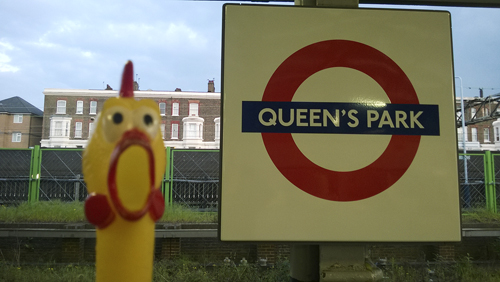
Queen’s Park was the name adopted for a housing estate by the park that was built from the late 1870s onwards. It was so named in honour of Queen Victoria.
The original London & Western Railway station was opened as Queen’s Park (West Kilburn) on 2 June 1879. The present station was opened as Queen’s Park for Underground trains on 11 February 1915.
QUEENSWAY
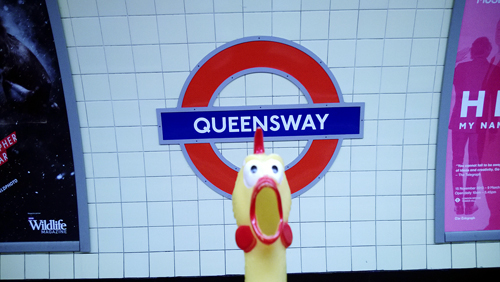
Queensway, formerly called Black Line Lane, was named from the Public House once on the corner of the street. It was re-named in honour of Queen Victoria soon after she came to the throne in 1837. It is suggested that the reason was that, as a child, this was the place of Victoria’s favourite horse ride; she then lived only a half a mile away at Kensington Palace. It was at first called Queen’s Road, then Queensway from January 1938.
The station was opened as Queen’s Road on 30 July 1900; re-named Queensway 1 September 1946.
RAVENSCOURT PARK
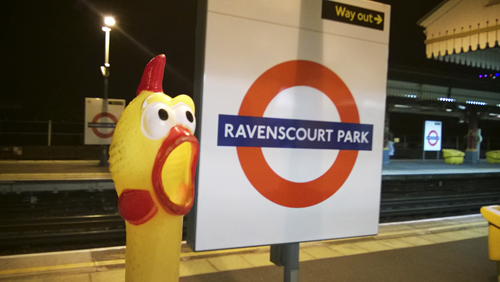
Ravenscourt Park was the manor granted to Alice Perrers, the notorious favourite of Edward III (reigned 1327–77). It was known as Palyngewyk in 1270 (later Padingwick) and 1819 a Raven’s Court House was recorded in the area, but the history of this modern name is unknown. The Park lies opposite the station along Paddenswick Road.
The station was opened as Shaftesbury Road by the London & South Western Railway on 1 April 1873. It was re-named Ravenscourt Park on 1 March 1888. First used by Underground trains on 1 June 1877.
RAYNERS LANE
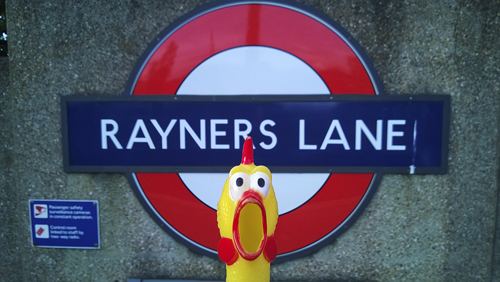
Rayners Lane was developed as a suburban residential area in the 1930s. The lane is named after Daniel Rayner, who owned a farm on it during the early days of the Metropolitan Railway.
The station was opened as Rayners Lane Halt on 26 May 1906.
REDBRIDGE
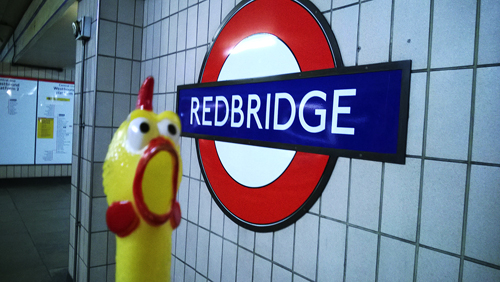
Redbridge takes its name from the bridge over the River Roding on what is now the Eastern Avenue just outside Wanstead. The old red bridge, first recorded in a map in 1746, was probably a century older; it has been replaced by a more modern one but the original bridge has given a name to a whole new London borough.
Prior to the opening of the station two other names, Ilford West and Red House were considered, but it opened as Redbridge on 14 December 1947.
REGENT’S PARK
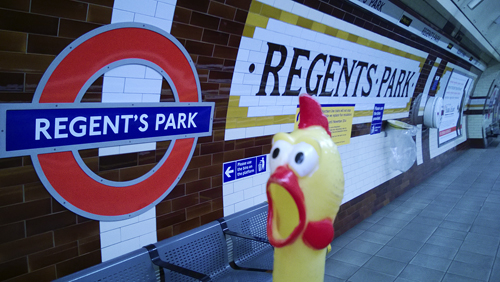
Regent’s Park, once Marylebone Park, was a Royal Hunting ground until the Interregnum, 1649. It reverted to the Crown in 1811 and was laid out afresh from 1812 onwards by John Nash for the Prince Regent, after whom it is named. At the same time Nash designed and built Regent Street as part of the ’Royal Mile’ connecting the park with the Prince’s house in St James’s. Roughly circular in shape, the Park covers an area of 472 acres and includes the famous London Zoo.
The station was opened as Regent’s Park on 10 March 1906.
RICHMOND
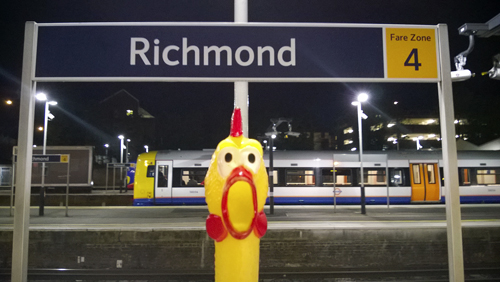
Richmond was known as Shene (meaning Shelter) from c. 950 until 1502, when Henry VIII rebuilt the place here after it had been burnt down by fire a year earlier. He called it Richmond (or Richemount) after his earldom so named in Yorkshire. This, in its turn, originally came from a name of a place in France. So modern Richmond obtained its name in a roundabout way.
The original London & South Western Railway station was opened as Richmond on 27 July 1846. The terminal station platforms were opened by the LSWR for the use of their own service from Hammersmith on 1 January 1869 and North London Railway trains from Broad Street. District Railway trains began on 1 June 1877 and the Metropolitan Railway served it between 1 October 1877 and 31 December 1906.
RICKMANSWORTH
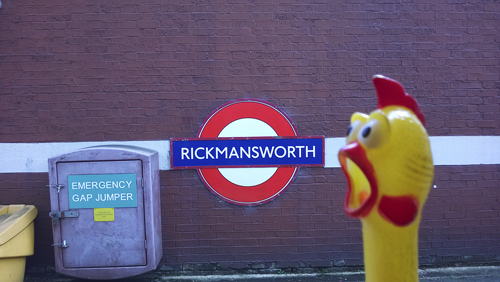
Rickmansworth was recorded as Prichemareworde in the Domesday Book and the name derives from a personal name Ricmaer and the Old English worp, ’enclosure’. It seems that Ricmaer is a continental name and this person had recently come from Europe and settled here. There have been many changes of spelling including Rikmersworth in 1430, until the present spelling was adopted.
The station was opened as Rickmansworth on 1 September 1887.
RODING VALLEY
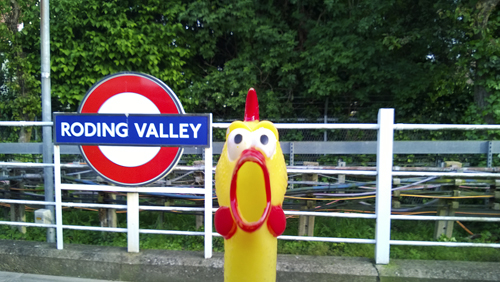
Roding Valley takes its name from the River Roding. The river, however, took its name from the village called Reding (or Roothing), which in turn came from the settlement of the people known as the Hroda, and was corrupted to Roding in the course of time. It was recorded as Rodon in 1576. The Valley as such is no more than a shallow dip at this point.
The station was opened by the London & North Eastern Railway as Roding Valley on 3 February 1936 and was first used by Underground trains on 21 November 1948.
ROYAL OAK
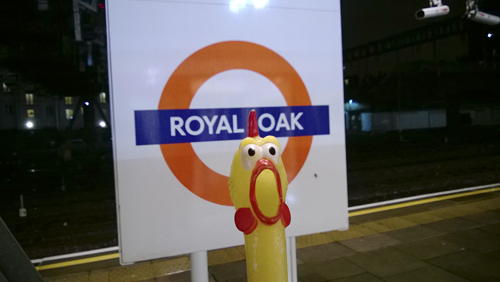
Royal Oak was the name of an old rural tavern, the entrance to which was by way of a wooden plank over the Westbourne River. This has now been replaced by the ’Railway Tap’ public house which contains much of interest for any railway enthusiast. The station and district now take their name from the old tavern.
The station was opened as Royal Oak on 30 October 1871.
RUISLIP
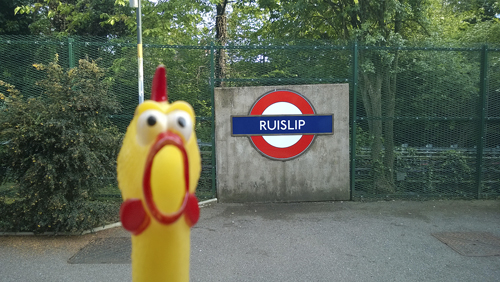
Ruislip was recorded as Rislepe in the Domesday Book and the name has one of London’s most curious origins derived from the Old English ryse, ’rush’ and hlype, ’leap’. It seems to refer to a spot where the little River Pinn could once be crossed. It has had various spellings until recorded as Ruislip in 1527.
The station was opened as Ruislip on 4 July 1904.
RUISLIP GARDENS
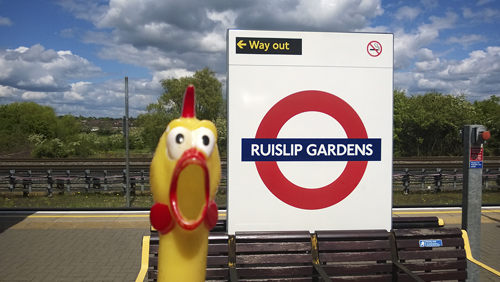
See Ruislip. The Gardens were taken from the name of a nearby 1930s housing development.
The station opened as Ruislip Gardens on 21 November 1948.
RUISLIP MANOR
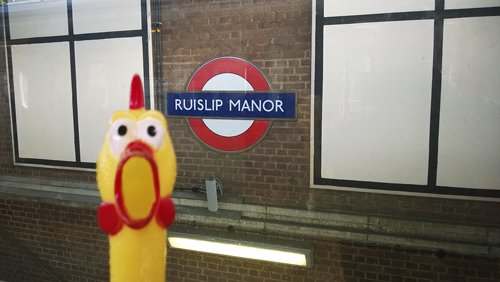
See Ruislip. Today near the River Pinn lies Manor farm. This, and its surroundings, once had a priory dependent of the Norman Abbey of Bec. During the wars with France the Manor was confiscated by the Crown and the priory was closed in 1414. The land was granted to the Earl of Bedford, then to King’s College, Cambridge, who still own the lordship of the manor.
The station was opened as Ruislip Manor halt on 5 August 1912.
RUSSELL SQUARE
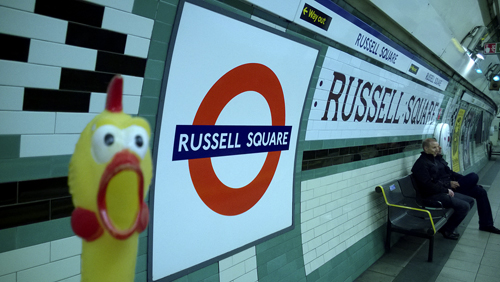
Russell Square was named in 1800 by an Act of Parliament and was built between 1801–05. It takes its name from the Dukes of Bedford whose family name is Russell; tey acquired lands in London in 1552 and later by marriage in 1669. The square was once part of an area known as Southampton Fields and later called Long Fields. The square was badly damaged during the Second World War, but has been redeveloped since to become the second largest square in London.
The station opened as Russell Square on 15 December 1906.

